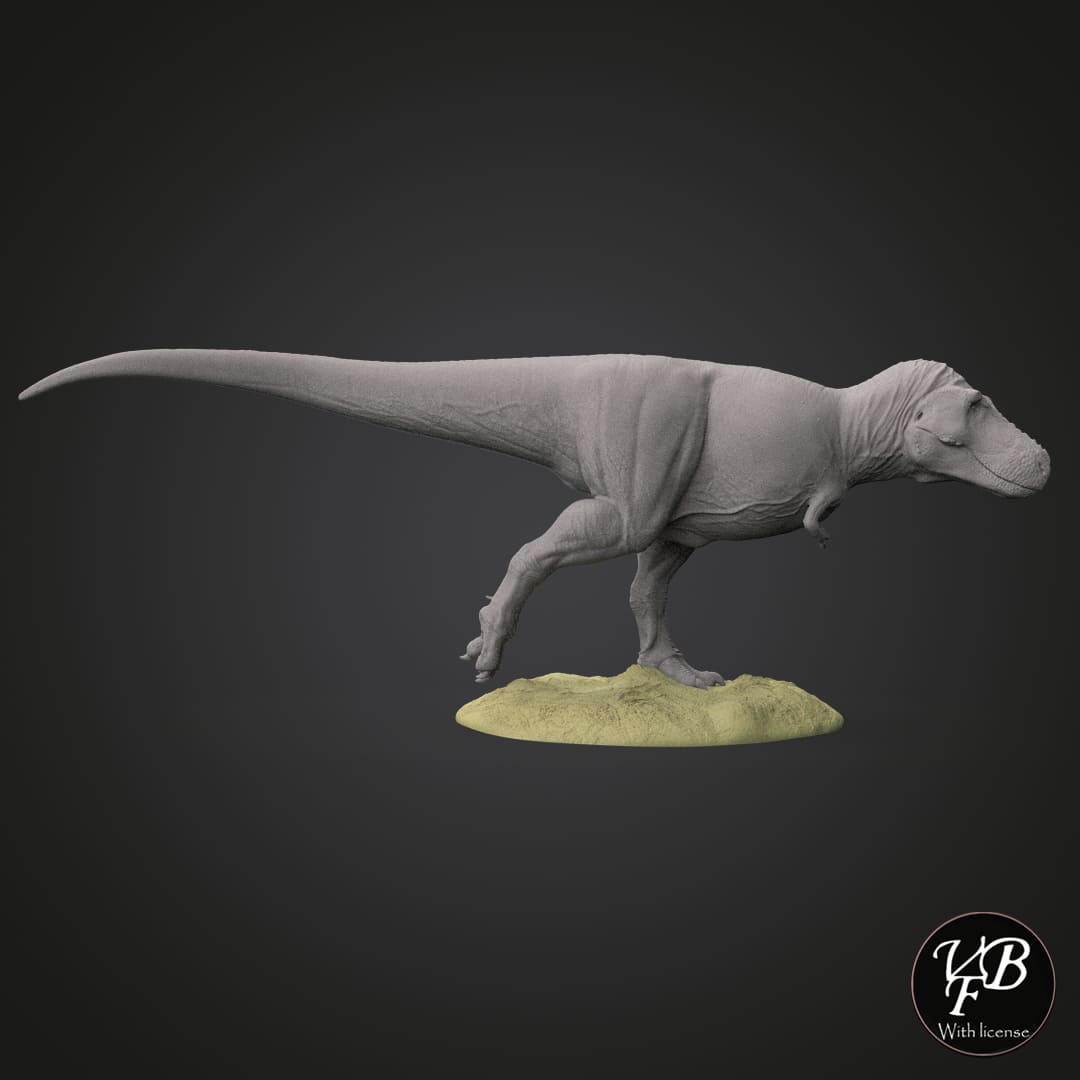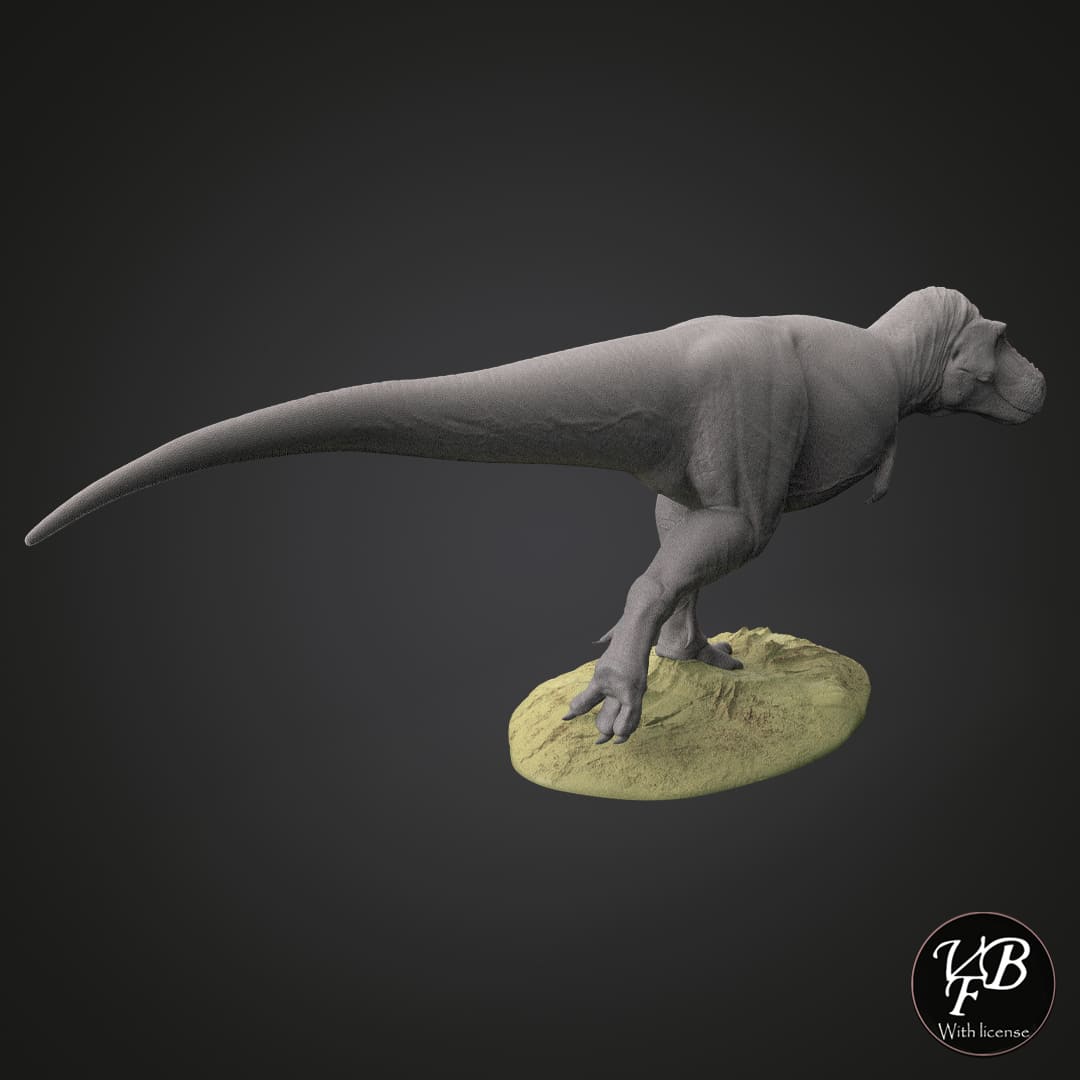




Tyrannosaurus Rex (subadult)
Do you want another scale?
Contact us and we will make it possible!
How will you receive your replica?
In the unprimed and primed variants, you will receive the complete replicas except for the large models, where you will receive an assembly kit.
In the hand-painted variant, the replicas will be delivered complete.
How does the painting service work?
We created a private chat for you where you will have direct communication with our painter , being able to choose your preferred color schemes and follow the hand painting process closely.
Pairs well with

Tyrannosaurus Rex (subadult)
If you have any questions, you are always welcome to contact us. We'll get back to you as soon as possible, within 24 hours on weekdays.
Shipping Information
Visit our shipping policy page to find all the information.
Customer Support
Give us a few details and we’ll offer the best solution. Connect by chat or email.
We are available 24/7.
FAQ’s
Visit our FAQ's page to find answers to common questions.
Contact Us
We'd love to hear from you. We are here to help. Visit our contact page to send us a message.
Product details
Tyrannosaurus rex, one of the most iconic and fearsome dinosaurs that existed during the late Cretaceous period, approximately 68-66 million years ago, continues to surprise science with new discoveries that expand our understanding of its biology and behavior. This predator, which inhabited what is now North America, measured up to 12-13 meters long and could reach a height of around 4 meters at the hip. Its weight ranged between 8 and 10 tons, making it one of the largest known theropods.
T. rex had a massive skull, more than 1.5 meters long, equipped with powerful jaws and an extremely strong bite, considered one of the most powerful among land animals. Its teeth were sharp, with serrated edges, designed to tear flesh and break bones, and could measure up to 30 centimeters. One of the most recent findings suggests that T. rex was not only an opportunistic scavenger, but also an active hunter, capable of taking down large prey thanks to its combination of speed, strength and ambush strategy.
As for its limbs, T. rex had long and robust hind legs, allowing it to move at an estimated speed of up to 20-30 km/h over short distances. Although the front limbs were small compared to its size, they were around 1 metre long and were equipped with two strong claws, the function of which is still a matter of debate, but they likely served to hold prey or assist in other tasks during feeding or reproduction.
Recent studies have revealed fascinating details about its behaviour and physiology. Fossil analysis has indicated that T. rex had an excellent sense of smell, probably aided by a large olfactory lobe in its brain, allowing it to detect prey or carrion at great distances. Furthermore, biomechanical studies have suggested that, despite its large size, its skeleton was optimized to withstand the impact and forces generated by its weight during locomotion.
Another recent discovery is the possibility that T. rex had feathers in its youth. Although not completely covered in feathers, juvenile specimens likely had partial plumage, which probably served a thermoregulatory function. As they grew and reached their adult size, they may have lost much of this plumage due to their colossal size, which would have allowed them to retain body heat more efficiently.
As for its social behavior, although T. rex was initially thought to be a solitary hunter, some studies of fossil footprints suggest that it may have lived in small groups or at least occasionally cooperated with other individuals, especially in hunting or feeding situations. In addition, marks on the fossils reveal signs of intraspecific aggression, indicating that there may have been territorial or hierarchical competition between individuals.
The most recent analysis of its fossils has also provided information about its lifespan. Tyrannosaurus rex are estimated to have lived around 28-30 years in the wild, with rapid growth during their teenage years, followed by a slower pace as they reached maturity.
Approximate measurements of the T-Rex:
- 1:35 scale Complete
- Length 341 mm
- Height 122 mm
- Width 61 mm
- Snout-tail length 500 mm
Information about aftershocks
Collector's item ; Hyper-realistic replica, highly detailed and with a high degree of scientific precision.
Made to scale, prototyped in resin and with a scenic base in most of the models offered. If you like miniatures, both for collecting and for painting, we offer you a wide variety of scale replicas; All of them related to dinosaurs, extinct prehistoric fauna and current fauna.
So if you love dinosaurs and animals as much as we do, this is your favorite store to collect and paint them :)
We are authorized distributors of all the replicas and figures we offer. We use 3D printers with 8K - 14K resolution, and high-quality resins with additives to improve hardness and flexibility, thus offering replicas of impeccable quality.
Different scales will be used to make the replicas (depending on the size of the species), although we are open to making other suggested scales upon request as long as they fit in our printing trays, for which you will have to contact us via email and request the required size.
Replicas are supplied with the option of airbrush priming in dark grey. If you require another colour, please let us know which one you prefer in the box with special instructions for the seller. Without priming, we do not guarantee that the resin will accept paint.
We also offer the option of choosing a professionally painted replica, which is agreed upon throughout its development with the painter, through a private chat available.
Complete replica (one piece): We supply complete replicas in those models that are small, and models that are medium, large or not very bulky, will have the prerogative of being presented as a complete replica or assembly kit as the case may be.
Complete replicas will be supplied separately from their base.
Replica assembly kit: We supply replicas whose models are large, very large or bulky, only with this option.
The indicated replicas (generally composed of base, head, body and tail) will come prepared for the subsequent assembly that will be required by the client, by sanding, putty, adhesive or technique chosen by the client.
All replicas are thoroughly inspected before shipping and will be carefully packaged to prevent damage during transport.
Information about the models
The poses of the models aim to represent each character in the most scientifically viable way, thus revealing the life and customs of prehistoric and modern fauna.
Each character has its own personality and develops in different life scenarios; birth, adolescence and play, hunting, feeding, fighting, courtship, death and many other scenes from their daily life, always from the creative perspective of their designers.
Handmade
All orders are individually prepared on the cutter for subsequent prototyping, obtaining a resin part that will require post-processing by manual and ultrasonic cleaning, support removal, ultraviolet curing, labeling and packaging.

We are authorized distributors
We offer both our own physical replicas and those that have been modeled by many of the best 3D designers, in order to offer you the greatest possible variety.
Frequently Asked Questions
If you have any questions about products, orders or shipping, please read our FAQ page to learn more.

